Experiments: 0 | I | II | III | IV | V | VI | VII | VIII | IX | X | XI | XII | XIII | XIV
We take two tanks (of diameter roughly 50 cm) and place one on a rotating table and the other on a desk. We fill them with water to a depth of 20 cm or so, and set the rotating table turning anticlockwise (looking down from the top) at a speed of order 10 rpm (revolutions per minute, i.e. a period of 6 seconds). We allow the water in the rotating tank to settle down into 'solid body' rotation - 20 minutes or so. Then we gently stir the fluid - our hand is best, but try not to introduce a systematic swirl - to generate motion, and wait a minute or so for things to settle down a little, but not long enough for the currents to die away. We observe the motion by introducing dye (food coloring).
Here's a shot of the rotating tank some minutes after the coloring has been introduced. It's also fun to use two different colors and watch the interleaving of fluid.
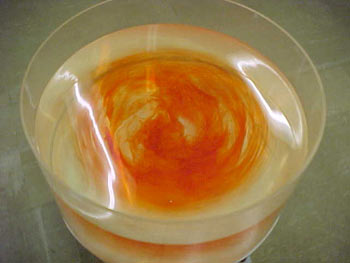
Non-Rotating
In the non-rotating tank the dye disperses much as we might intuitively expect - have a look at the pictures and movie loop below. Note that we can also see a side view on the left-hand side of the images below obtained using a mirror sloped at 45 degrees.
See the movie
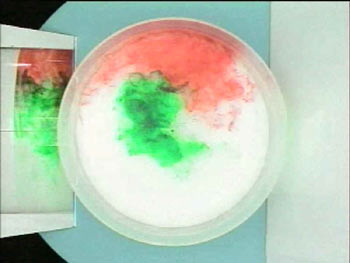
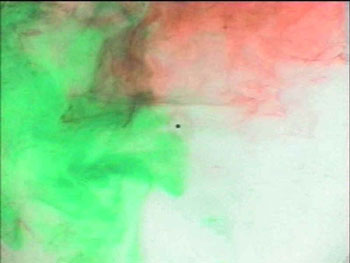
Rotating
In the rotating body of water, by contrast, something glorious happens - have a look at the images and the movie loop below. We see beautiful streaks of dye falling vertically; the vertical streaks become drawn out by horizontal fluid motion into vertical 'curtains' which wrap around one another. The vertical columns - called 'Taylor columns' after G.I. Taylor, who discovered them - are a result of the rigidity imparted to the fluid by the rotation of the tank. The water moves around in columns which are aligned parallel to the rotation vector. Since the rotation vector is directed upward, the columns are vertical. Thus we see that rotating fluids are not really like fluids at all!
See the movie
Note that the movie is recorded in the frame of reference of the tank - i.e. by a camera mounted above the rotating table, rotating at exactly the same speed.
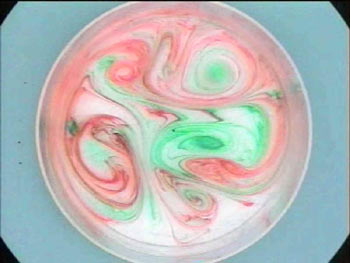
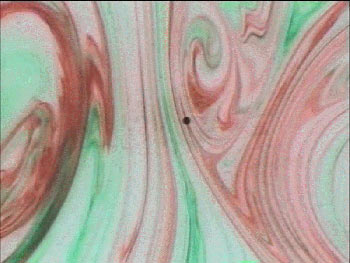
From the movie loop of the dye in the rotating frame try and estimate the Rossby number - see the introduction and chapter 6 of our notes. Is the Rossby number large or small?
Have a look at more Taylor columns here:


See the movie
Have a look here to learn about the life of G I Taylor.
